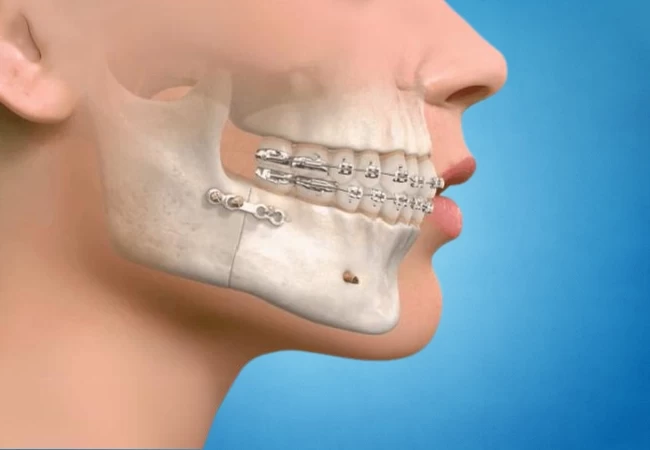Maxillofacial Implants: Key to Managing Congenital Facial Deformities

Congenital facial deformities, or craniofacial abnormalities, are congenital disabilities affecting the face and skull. These conditions can vary widely in severity and type, impacting the physical appearance and sometimes the functionality of facial features. Common examples include cleft lip and palate, craniosynostosis (premature fusion of skull bones), and hemifacial microsomia (underdevelopment of one side of the face). The causes of these deformities are often linked to genetic factors or environmental influences during pregnancy.
Access to comprehensive treatment options for facial deformities is improving thanks to advancements in medical technology and increased availability of specialized services. Orthopedic implant suppliers in Uganda are vital in providing the necessary materials for surgical interventions to correct these conditions. Surgical procedures often involve intricate techniques such as bone grafting or tissue expansion, which require high-quality implants to ensure successful outcomes.
The involvement of an orthopedic implant manufacturer is essential in this process as they develop innovative products tailored to meet the specific needs of craniofacial surgery. These manufacturers constantly research new materials and designs that enhance surgical precision and patient recovery times. Treatment options typically include surgery, orthodontics, speech therapy, and psychological support. This addresses both functional impairments and aesthetic concerns associated with congenital facial deformities.
Early diagnosis is crucial for planning effective treatment strategies that can significantly improve the quality of life for affected individuals. With advancements in medical science and technology, individuals born with these conditions have greater hope for achieving normal function and appearance through comprehensive care plans tailored to their unique needs.
Importance of Maxillofacial Implants in Modern Medicine
Facial implants play a crucial role in modern medicine, offering transformative solutions for patients with facial injuries, congenital disabilities, or those undergoing reconstructive surgery. Unlike dental implants, primarily used to replace missing teeth, facial implants are designed to support the reconstruction of facial structures such as the jawbone, cheekbones, and even parts of the skull. These implants restore physical appearance and improve vital functions like chewing and speaking.
The implant’s function extends beyond aesthetics; it provides structural support for overall facial harmony and function. With advancements in medical technology, these implants have become more sophisticated and customizable. Recent innovations allow the 3D printing of patient-specific implants, ensuring a perfect fit and enhanced integration with natural bone.
The distinction between them and dental implants highlights their unique applications in reconstructive surgery. While both types of implants significantly improve patients’ quality of life, maxillofacial implants address more complex craniofacial challenges.
Overall, the continuous advancements in implant technology have revolutionized treatment options available to surgeons and patients alike. As research progresses, we can expect even more refined materials and techniques to enhance further the implant’s efficacy and application range in modern medicine.
Maxillofacial Implants Used for Congenital Conditions
Implants are crucial in addressing congenital conditions providing functional and aesthetic benefits. These implants are designed to integrate seamlessly with the craniofacial structure, offering solutions for various facial anomalies. The types of implants used in facial surgery vary based on the condition being treated and the desired outcome.
Craniofacial implants are often employed in reconstructive surgeries to correct congenital deformities such as cleft palate or craniosynostosis. These implants are crafted from biocompatible materials that ensure compatibility with human tissue, minimizing the risk of rejection or adverse reactions. Common materials include titanium, porous polyethylene, and bioresorbable polymers. Titanium is renowned for its strength and durability, making it ideal for load-bearing applications such as jaw reconstruction.
Porous polyethylene is another popular choice due to its lightweight nature and ability to encourage tissue integration through its porous structure. This material is frequently used in reconstructive surgery materials for orbital floor repairs or cheekbone augmentation. Bioresorbable polymers offer a unique advantage as they gradually dissolve within the body over time, eliminating the need for additional surgeries to remove them.
Each type of implant serves a specific purpose within maxillofacial surgery, tailored to meet individual patient needs while ensuring safety and efficacy through advanced biocompatible materials. As technology advances, these solutions evolve, promising improved outcomes for those affected by congenital conditions requiring surgical intervention.
Surgical Techniques Involving Maxillofacial Implants
These implants have revolutionized the field of facial reconstructive surgery, offering innovative solutions for correcting facial deformities. Surgical techniques for facial deformity correction have evolved significantly, focusing on precision and patient safety.
One of the key advancements in this area is the implant placement procedure, which involves careful preoperative planning and advanced imaging technologies to ensure optimal results.
Minimally invasive surgical methods are increasingly being adopted to enhance patient outcomes. These techniques reduce tissue trauma and minimize scarring, leading to quicker recovery and less postoperative discomfort. Surgeons often utilize small incisions and specialized instruments to place implants with high accuracy, thereby improving aesthetic results while reducing the risk of complications.
Postoperative care and recovery are crucial components of successful maxillofacial surgery. Patients are typically advised on specific guidelines during their recovery, including dietary adjustments, oral hygiene practices, and activity restrictions. Regular follow-up visits allow surgeons to monitor healing progress and promptly address concerns.
By adhering to these postoperative protocols, patients can achieve optimal healing outcomes and enjoy improved facial symmetry and function.
The Benefits and Risks Associated with Surgery
Maxillofacial surgery offers a transformative solution for individuals with congenital or acquired facial deformities. The benefits of maxillofacial surgery are profound, often resulting in enhanced aesthetic appearance and improved functionality, such as better chewing, speaking, and breathing capabilities. Patients who undergo this type of surgery experience a significant boost in self-esteem and quality of life.
However, like any surgical procedure, implant surgery has inherent risk factors that need careful consideration. These risks can include infection, nerve damage leading to numbness or altered sensation, and the possibility of implant failure or rejection. Patients must discuss these potential complications with their healthcare provider to fully understand the implications.
Success rates for congenital corrections with implants are favorable when skilled surgeons use advanced techniques. Studies indicate that patient outcomes post-surgery are generally positive when proper pre-operative planning and post-operative care are implemented. Nonetheless, individual results can vary based on factors such as the patient’s overall health condition and adherence to recovery protocols.
Ultimately, while maxillofacial surgery can offer substantial benefits, patients must weigh these against the potential risks and thoroughly discuss them with their medical team to make informed decisions about their treatment options.





